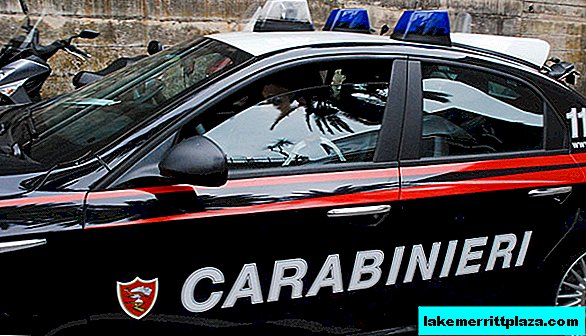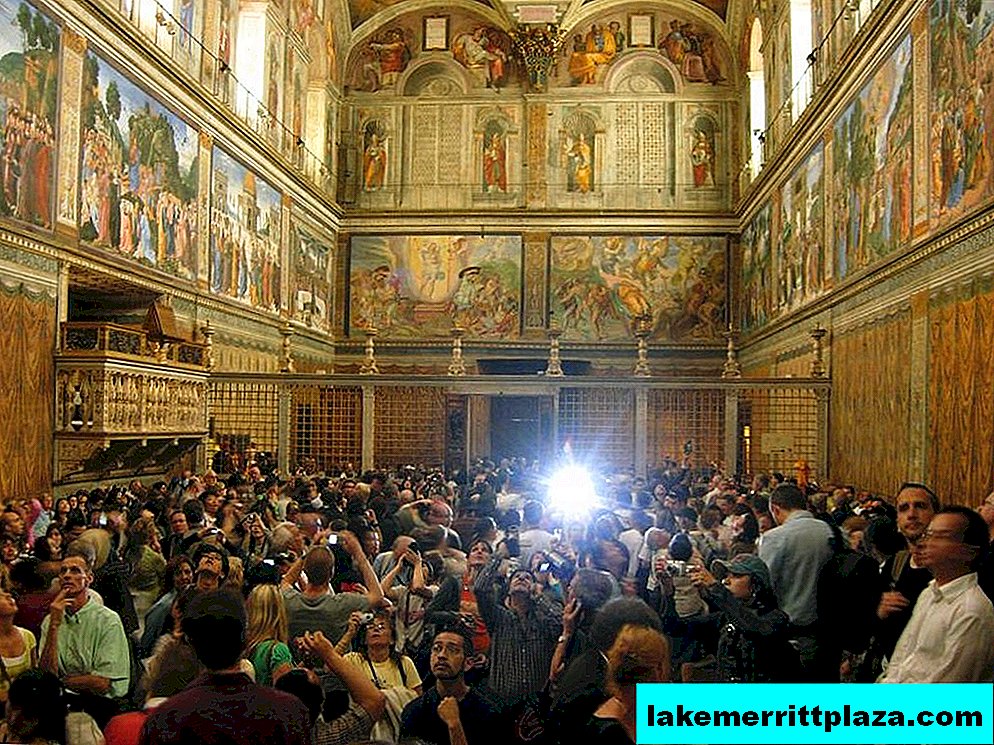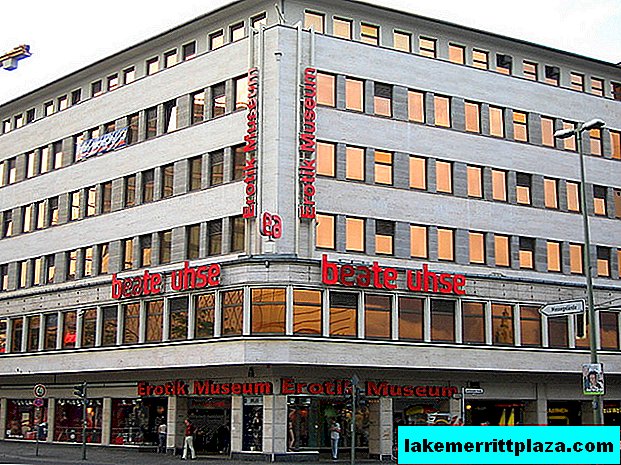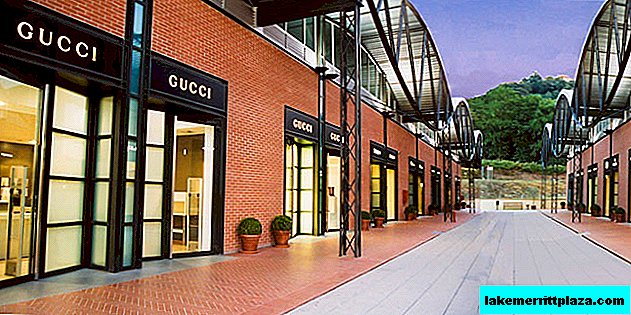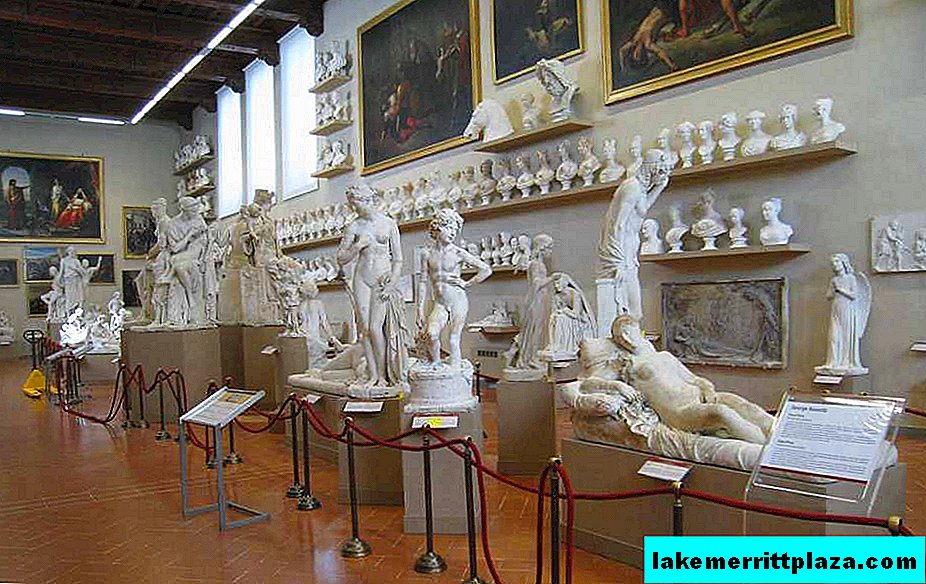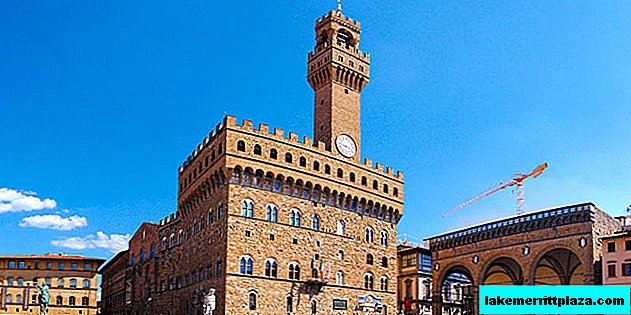The Field of Mars (Campo Marzio, Campo Marzio) is a lowland in the bend of the Tiber River with an area of 250 hectares, between the Quirinale, Pincho and the Capitol Hills, intended for gymnastic exercises and military exercises. The center of the field, where the altar of Mars was built, subsequently remained free, received the name Campo and even in ancient Rome turned into a war memorial, and the rest of the space was built up.
Story

The history of the Field of Mars is closely connected with the military glory of Rome. In ancient times there was a campus (Campo) - barracks and other structures for the needs of a large army: hospitals, arsenal, training fields. In the center stood a sculpture, as if observing the events of Mars, the god of war and the patron saint of all Ancient Rome, and an altar.
After the expulsion of the Tarquinians (V century BC), the status of the field changed. Now it was a place of public gatherings, military shows and sports, Equiria was celebrated every year, accompanied by horse racing. On a vast territory, everyone could find entertainment for themselves.
First buildings
Villa Publica
The first public building on the Champ de Mars is Villa Pablica. The building, which arose in 435 BC, essentially represented 300 m of cleared space, enclosed by a small portico. This place was used for regular (every 5 years) gathering of Roman citizens for political purposes.

During the Punic Wars in the 3rd century BC numerous battles were fought outside of Rome and its environs. However, wealthy generals returning from campaigns considered it their duty to honor the memory of the dead and to give glory to their gods. Thus, Campo Marzio was built up with various temples and tombs.
Circo di Flaminius
In 221 BC, Consul Flaminius built a circus in the southern part of Campo Marzio for horse racing and the Plebeian Games. They laid a path to the circus that connected the gates of del Popolo and the crossing across the Tiber - Flaminia Road (Via Flaminia). To this day, the Circus of Flaminia has not survived.
Torre Argentina Square (Largo di Torre Argentina)
During the time of the Republic, a space called the Area Sacra (lat. Holy Land) formed on the territory of the Field of Mars. Such a name is more than justified, because in a relatively small area of the capital's land 4 impressive buildings were built: the Hall of 100 columns (Hecatostylum), the Baths of Agrippa, the Pompeii Theater, the Flaminiev Circus.
Archaeological excavations, which allowed to find the remains of ancient temples and public institutions, began in the 20th century and continue to this day. The main decoration of historical monuments today are four-legged fluffies. And the Tore Argentina square itself is better known as the place where cats live.
Temples
Bellona Temple (Templum Bellona)
The Temple of Bellona, the patroness of the defenders of the Motherland, was built in 295 BC. Appius Claudius Tsek (lat. Appius Claudius Caecus) in honor of the victory of the Romans over the Etruscans. The sanctuary of the warrior goddess was located on the Field of Mars near the Marcellus Theater (Teatro di Marcello). Political meetings took place in the temple, receptions were held in honor of foreign ambassadors, and at the moment the temple is a ruin.
Temple of Hercules (lat.Ercole Oleario)

The Temple of Hercules was built around 120 BC. on the hilly coast of the Tiber, at that time referred to as the Bull Forum (Foro Boario). The round rotunda, completely surrounded by columns, is the oldest marble building in Rome, still pleasing to the eye of modern tourists. There is an assumption that the temple was built with money from a merchant of olive oil, as indicated by an inscription on one of the statues in the sanctuary. Located in the square opposite the Mouth of Truth (Piazza della Bocca della Verita).
Pantheon (Pantheon)
In the year 27 e. Marcus Agrippa built the first Pantheon - the temple of all the gods, burned down after half a century, and the most ancient public baths.

The pantheon created by Agrippa was a building surrounded by a portico of huge granite columns of the Corinthian order. The very first version of the great temple did not remain captured even in ancient manuscripts. It is only known that the modern Pantheon is located exactly on the same place in the Circus of Flaminia as its predecessor.
The current Pantheon was rebuilt in 126 AD Emperor Hadrian. The temple is equipped with several rows of columns, crowned by a triangular transverse beam.The main part of the temple is hidden under a round dome, in the center of which there is a round window - Oculus (from the Latin "eye").

A unique feature: the height to the Eye and the diameter of the dome have the same value - 43.3 m. There is also an interesting link of the Oculus to the Spring Equinox and the Birthday of Rome on April 21!
Temple of the Divine Hadrian (lat.Templum Divi Hadriani)

Hadrian's Temple was erected in 145 A.D. descendant of the emperor, Anthony Pius (lat. Antoninus Pius). The building was made in a luxurious style: on a rectangular podium were built two rows of 13 marble columns that supported the ornate roof. A wide staircase, faced with slabs of marble and carved reliefs, led to the temple.
Unfortunately, only 11 columns and part of the wall of the sanctuary survived to the present. The remains of the temple became part of the Roman customs building, and later - the stock exchange, built in the late 19th century. Address of the Temple of Hadrian: Piazza di Pietra.
Theaters
Warlord Lucius Cornelius Sulla (lat. Lucius Cornelius Sulla) in the 2nd century BC. gave the Field of Mars popularity among the Roman nobility.Apartment buildings, called insulins, began to be built, public buildings were constructed. The once abandoned territory began to be actively built up with houses, porticoes, palaces, theaters.
Pompey Theater (lat.theatrum pompeium)

Gnei Pompey 52 BC began the construction of a huge theater of stone for 27 thousand spectators, the amphitheater of which had a diameter of 158 meters. A grandiose public institution - Pompeii Theater, the first theater made of stone. The huge entertainment complex, decorated with fountains and a garden, also included a curia, where Senate meetings were held.
During the March id of 44 BC the great Gaius Iulius Caesar was killed in the Senate walls of the Pompeii Theater.
Marcella Theater (lat.theatrum marcelli)
Marcellus Theater - an ancient institution, intended for conducting performances in the open air. The place for the drama theater was chosen by Julius Caesar himself, most of the construction work was carried out by his successor, Emperor Augustus. The theater was named after the nephew of Augustus - Marcus Marcellus, who died in early adolescence.
The institution, which in its best times accommodated about 20 thousand spectators, has been well preserved from the time of Ancient Rome. Sometimes, small summer concerts take place at the Marcellus Theater venue.
Imperial period buildings
Septa Julia (Saepta Julia)
During the reign of Emperor Augustus on the Field of Marsa place for voting of the inhabitants of Rome was arranged - Saepta Julia. The extensive structure (300 x 95 m) for a long time served the needs of the Roman rulers, while in the 3rd century. AD not in final decline. However, part of the wall of Septa Julius can be seen next to the Pantheon.
Porticus Octaviae
Nearby the Marcellus Theater and the Flaminius Circus are the ruins of a portico erected in honor of the sister of Emperor Augustus, Octavia Minor. The building was created around 27 BC, but at the dawn of the Christian era, the building, lined with expensive marble, was twice put to fire. In the past, in the walls of the portico of Octavia one could see works of art, such as Pliny's “Natural History”. After significant upheaval, the building was used as a fish market and then fell into decay.
Altar of Peace (Ara Pacis)
In 13 BC the Roman Senate presented the emperor Augustus with a gift - a monument to the Altar of Peace, named after the peace goddess Pax.
A huge open-type altar, exquisitely decorated with carved slabs, was erected on the Champ de Mars in the western part of the Flaminia Ore. For a long time, the monument erected in honor of the imperial victories was considered lost until some parts of it were brought to light in the 16th century.
In the 19th century, in-depth excavations allowed the restoration of most of the monument. And only in 1938 the sacred Altar of Peace was rebuilt again under the leadership of Benito Mussolini opposite the Mausoleum of Augustus. Now a structure is installed over the ancient monument that protects it from the vicissitudes of nature.
Mausoleum of Augustus (Mausoleo di Augusto)

Mausoleum of Augustus - tomb built by the emperor in 28 BC The tomb consists of several concentric rings of brick and earth, mounted on top of each other. In the past, the equestrian statue of Augustus, which did not survive, crowned the roof of the mausoleum.
The remains of relatives and heirs of the emperor rested in the tomb: sister, son-in-law, adopted son, Augustus himself, his wife Livia and many others.
The Mausoleum of Augustus was repeatedly plundered; restoration work was carried out only under Mussolini. However, at the moment there is no access to the monument; tourists have to admire its depressing beauty from the outside. Currently, the monument is located on the banks of the Tiber near Piazza Augusto Imperatore.
Stadio di Domiziano
After a fire in 64 CE, Emperor Domitian had to rebuild many of Rome's public spaces.In particular, the current Piazza Navona (Piazza Navona), was once a stadium on the Champ de Mars, where all the significant sports and social events of the capital took place.
Column of Marcus Aurelius (Colonna di Marco Aurelio)

A 30-meter column was erected at the end of the Markoman War (166-180 AD) between Rome and the Germanic tribes. The marble pillar is densely decorated with battle scenes in which the valor of the emperor and military commander Marcus Aurelius (Latin Marcus Aurelius Antoninus), as well as his army, is glorified.
In the original, a statue of the emperor was installed on top of the column, which in the Middle Ages was replaced by a sculpture of the Apostle Paul. The pillar is well preserved and is available for inspection at Piazza Colonna.
Modern days
The modern Field of Mars is part of the historical center, one of the 22 districts in Rome that has preserved its historical layout and development. In the center is the Field of Mars, an undeveloped square-square, still preserving the memory of the military glory of the ancestors.

Subsequently, Campo Marzio changed his appearance many more times, but could not return to his former splendor. Having turned into an ordinary residential area in Rome, the Field of Mars was built up with apartment buildings, which inevitably led to the destruction of ancient monuments. The ancient churches were replaced by palaces of wealthy citizens: Borghese, Firenze, Ruspoli and many others.
How to get there

You can get to Piazza in Campo Marzio from the nearest metro station, Barberini, along Via del Tritone.
If you are already in the urban area of Campo Marzio, then you can walk to the right place from the Pantheon, from Piazza Venecia, from Piazza Venecia, from many other attractions.

